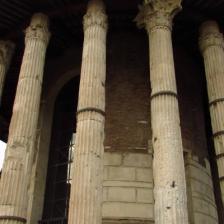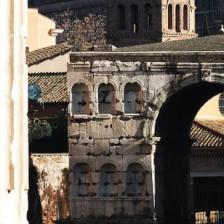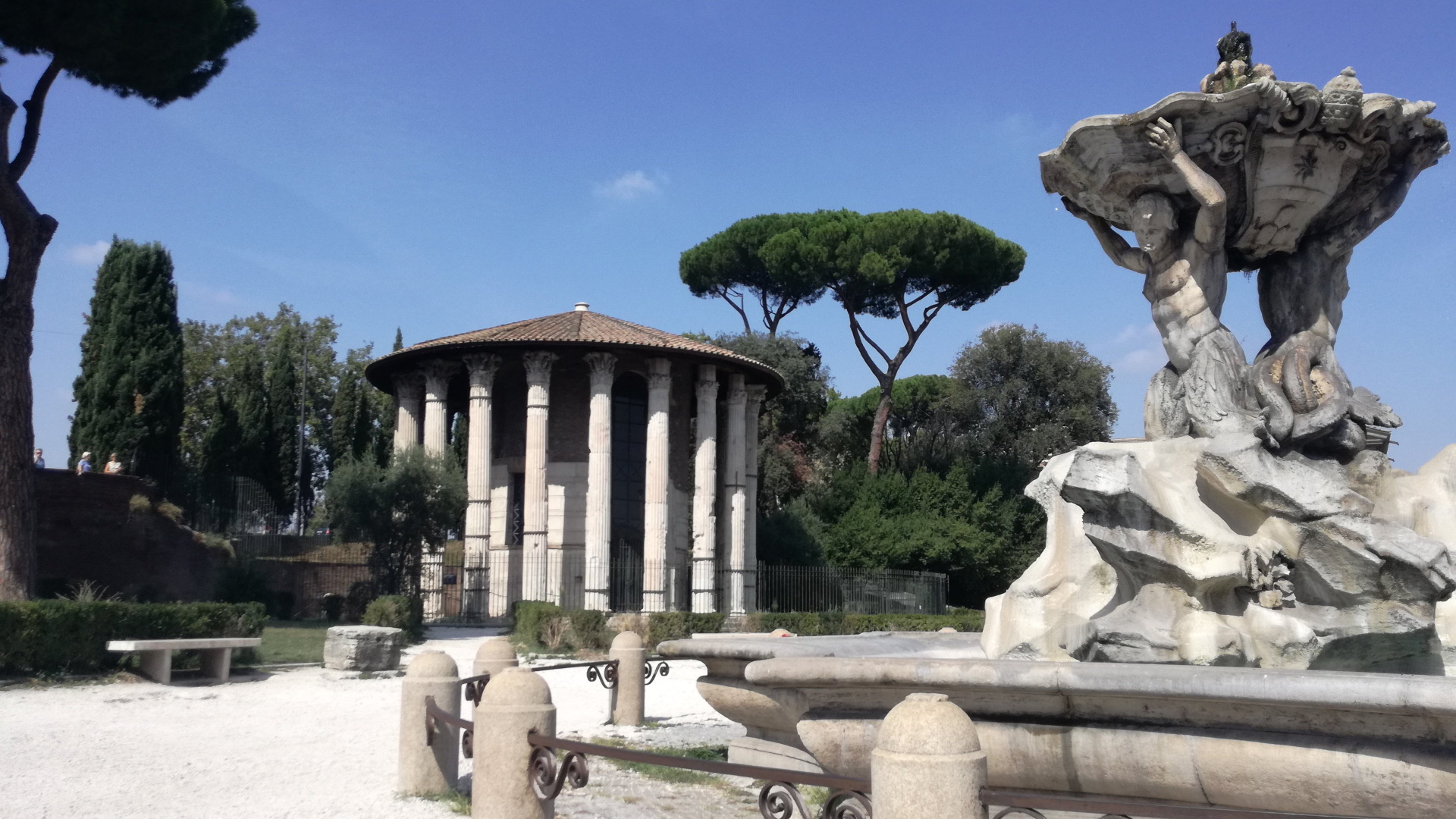
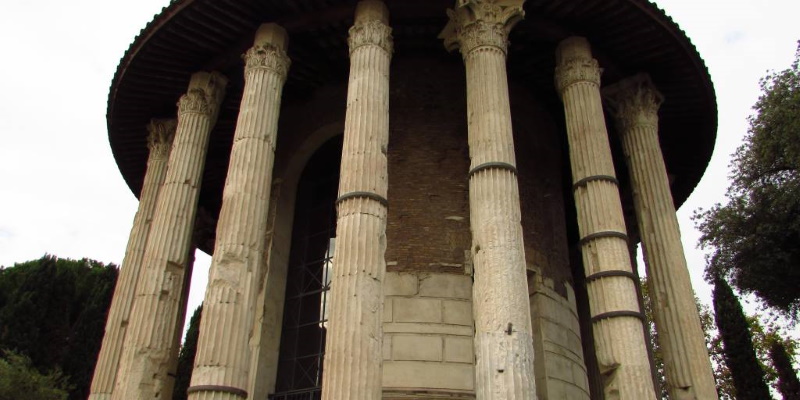
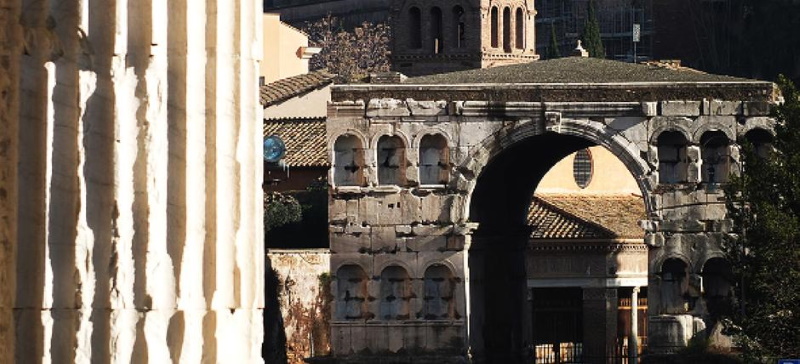
The Forum Boarium was the space given over to the cattle market and was situated between the Tiber and the Capitoline, Palatine, and Aventine hills.
According to legend, when Hercules arrived in this area with Geryon’s oxen, he was robbed of these by the giant Cacus, who lived in a cave at the foot of the Aventine hill. After slaying the giant, Hercules was honoured as a god by the ancient dwellers of the Palatine hill, the Arcadians, who are said to have dedicated an alter to him – the Ara Maxima. The tufa stone core of this altar is housed inside the church of Santa Maria in Cosmedin.
The area, which in remote times had a marsh called the Velabrum, was reclaimed by the Etruscan kings (6th century BC) by building the great sewer, the Cloaca Maxima, and the remains of its arches are still visible.
The reign of Servius Tullius (6th century BC) is considered the time when the Tiber port was built and which extended where the Rome registry office building (the “Anagrafe”) is today.
The two temples towards the Tiber date back to the Republic. The rectangular one was dedicated to the river god Portunus, while the round one was dedicated to Hercules the Victor.
A series of great works were carried out in the imperial period, such as the Trajan period (98-117 AD) warehouses near the river port, the elegant Arch of the Argentari of the Severan age (204 AD), and the four-fronted Arch of Janus, an imposing structure probably built in the reign of Constance II (337-361 AD).
Piazza Bocca della Verità
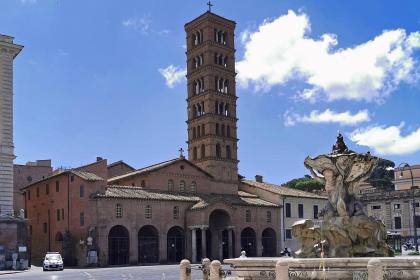
 Condividi
Condividi
The river Tiber
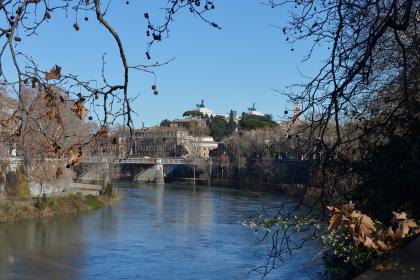
According to legend, the history of Rome begins right here
Church of San Giorgio in Velabro
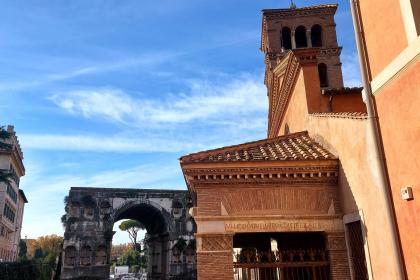
 Condividi
Condividi
The Temple of Hercules Victor
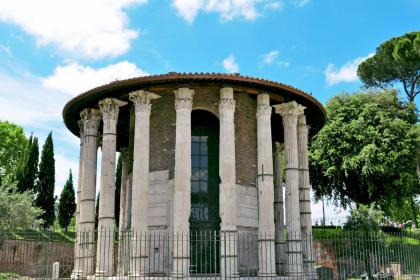
 Condividi
Condividi
The Temple of Portunus
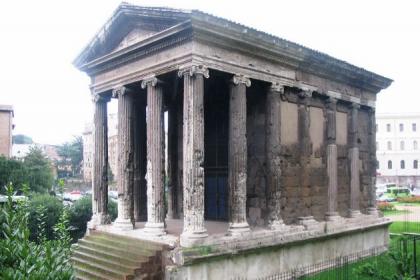
 Condividi
Condividi
Information
Area open at the public
 Condividi
Condividi
Location
To find out about all accessibility services, visit the Rome accessible section.












































